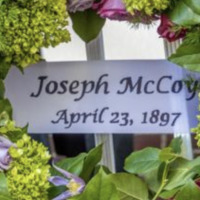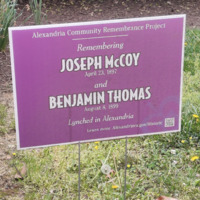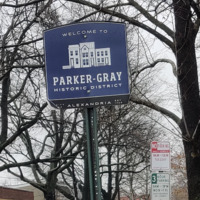What Landmarks Remain Today?
In continuation, I believe it is validating knowing about what historical aspects remain at present day and what changes exist since then.
With respect to the lynching of Joseph McCoy, there is an annual memorial that marks the day he was lynched. This is a part of Alexandria’s Community Remembrance Project that includes various events to visualize the history of racial hate crimes and work towards achieving an inclusive and equal community. On this day, there is a procession from the city hall, where McCoy was put inside as prisoner, to the lynching site. This is followed by a wreath laying and illumination of City Hall to provide reconciliation and respect to McCoy (In Memoriam 2023, n.d.). There is also a soil remembrance event where the public would gather soil from the lynching sites and place it into a glass jar and sent to the Equal Justice Initiative (Soil Collection Remembrance Event, n.d.).
Another change that occurred over the years was the Alfred Street Baptist Church which gradually expanded and got remodeled and today, the congregation is one of the largest in the area with thousands of members. In addition, the Alexandria Black History Museum that exists now was initially a segregated library attended by Black residents. It houses information about how the Blacks fought through slavery and how they shaped the present county. Moving on to the African American Heritage Park which was built on the burial ground of Black Baptist Cemetery. This site has a bronze memorial that celebrates African American contributions and had several gravestones and markers which were recovered and preserved (Alexandria’s African American Community, n.d.). In 1984, the African American Uptown neighborhood was renamed as Parker-Gray District and The Berg along with Uptown both still exist in the present 21st century.
The final landmark that changed was the Parker Gray High School which eventually closed in 1965 and temporarily became a Middle School for another decade before it was sold. It was revamped and became an extension to the present Alexandria Black History Museum (History of Alexandria’s African American Community, n.d.).
When I personally visited Old Town Alexandria, I found certain sign boards that connected to Alexandria’s history. There was a sign near the Kate Barrett library, which used to be a public library not welcomed for African Americans, which related to the remembrance of McCoy and there was another sign stating “Parker-Gray District”. This stood out to me especially after revealing and reading about the county’s history.
Therefore, these landmarks are found throughout Old Town Alexandria but, how many people actually know the significance and history behind their existence. There are also others who might just walk past the structures that symbolize the hardships and geographic resistance faced by the African Americans during that period. Because of this, I think the history can get lost so it’s important for the county to hold events, like the memorial, to help empathize and visualize the past.
References:
Alexandria’s African American Community: Online Resources. (n.d.). City of Alexandria, VA. Retrieved May 6, 2023, from https://www.alexandriava.gov/historic-alexandria/alexandrias-african-american-community-online-resources
History of Alexandria’s African American Community. (n.d.). City of Alexandria, VA. Retrieved May 6, 2023, from https://www.alexandriava.gov/historic-alexandria/history-of-alexandrias-african-american-community
In Memoriam 2023: Joseph McCoy April 23, 1897. (n.d.). City of Alexandria, VA. Retrieved May 6, 2023, from https://www.alexandriava.gov/cultural-history/in-memoriam-2023-joseph-mccoy-april-23-1897
Soil Collection Remembrance Event. (n.d.). City of Alexandria, VA. Retrieved May 6, 2023, from https://www.alexandriava.gov/cultural-history/soil-collection-remembrance-event
By: Poojita Kondur


